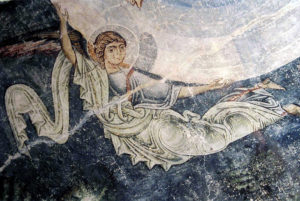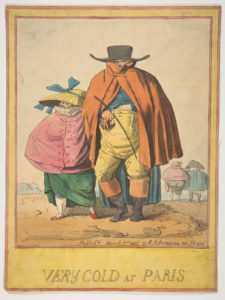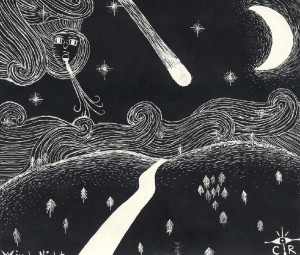It rained here last Friday, the sort of rain we get when a cold front comes through, a wide swath of it coming down diagonally across the peninsula. We won’t be seeing much of this for a while, not while summer is here. Friday’s may very well have been the last cold front we’ll see until next fall. In its wake came perfect weather: cool and dry. It lasted for days and days and still it is pretty pleasant out, to be honest. I like to think it was our brush with Cold Sophie and the Ice Saints. Maybe they came a bit early this year.
May 11, today, is the feast day of St. Mamertus. Tomorrow, the 12th, St. Pancras. On the 13th we remember St. Servatius and on the 14th, St. Boniface, and then on the 15th, Cold Sophie herself: St. Sophia. In old German weather lore, this group of saints, led by Sophia, are known as the Ice Saints, die Eisheiligen. Kalte Sophie or Cold Sophie is their ringleader, and she and the Ice Saints are thought to bring one last blast of cold air before summer finally settles in. And so today they begin to make their entrance on the scene. If you live in a place that is more temperate than ours, you may experience colder temperatures than you have been, and if you do, you can give a nod to Cold Sophie and the Ice Saints. Cold Sophie may have come early to Lake Worth this year, but for all of you in cooler climes, take care. Avoid planting cold-sensitive crops until after the days of Cold Sophie and the Ice Saints have run their course. A good story, and good common sense, too.
Image: A fresco from St. Sophia Church in Ohrid, Macedonia. Circa 11th century. [Public domain] via Wikimedia Commons.


